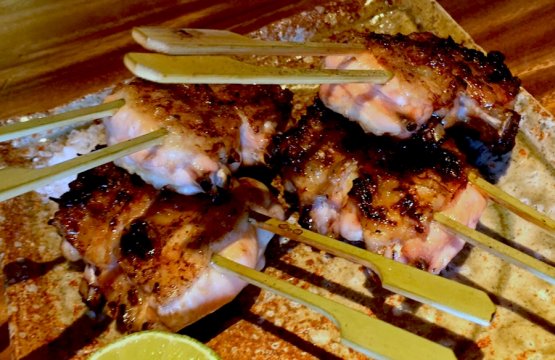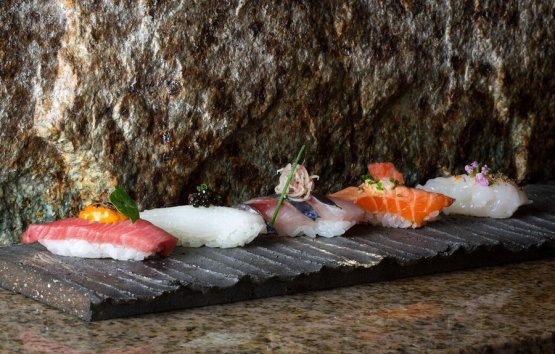Zuma, wherever in the world, it’s intelligent luxury, light elegance and pleasure for the palate. The first dates back to 2002 in London, Rainer Becker with associate Arjun Waney, a chef able to adopt a culinary tradition, that of Japan, which didn’t belong to him, being German, and an excellent entrepreneur capable of seeing the future in a project beyond the simple investment. Starting from the certainty that location is crucial, they combed through the exclusive Mayfair in London and found a dwelling in the equally rich Knightsbridge, at 5 Raphael Street.
The right spot in the right area in the right city, this is a must. This explains why the arrival in Miami, Florida, came only five years after New York, in 2010. Miami has a more open field, Manhattan is like an egg.
Becker is the first to admit that the way
Nobu Matsuhisa interpreted Japan in the British capital made his path easier. The reason is easy: the cooking of both chefs has a Japanese appearance, but their souls are contaminated by very different experiences. Peru for
Nobu, being European for
Ranier. The former made a virtue out of necessity since in Peru, in the mid Seventies, though the Japanese community was strong it was impossible to find all the original products a Japanese chef needed to cook Japanese food. The latter, since he couldn’t introduce German culture and ingredients, studied the various Japanese cuisines until he felt he had acquired them all without historical or cultural limits.
«The truth is, even though Zuma, but Roka too, are Japanese restaurants, it is my Japanese cuisine, the one I like. There’s respect for raw materials, for service, but in the end it all starts from a barbecue without the formalism the Michelin Guide holds dear», says Rainer who when speaking of BBQ is referring to robatayaki cuisine, where robata is the grill, a typical version from the fishermen in the northern islands, unknown in Europe until 2002 when it debuted inside Zuma London.

This is certainly not a photo by John Carey, it was taken by Paolo Marchi, author of the piece, who wanted to capture the amazing Chicken wings with sake and lime
This success was the result of a main choice, that of focusing on the more popular of restaurant styles, called izakaya, serving a bit of everything and in an informal way. «At our place, you use your hands a lot», the patron pointed out. I can confirm, starting from the edamame in a spicy sauce, soy beans still in their pod and covered in a very hot sauce, or the fantastic chicken wings with sake and lime. I think if you’re called
Nobuyuki Matsuhisa, and only
Nobu for some time now, you’ll find less opposition when revolutionising the cuisine from where you were born than if you’re called
Rainer Becker and come from Germany which is certainly not thrilling in terms of food.
I believe the latter chose the informality connected with izakaya for the very reason of surprising, without giving points of reference, robata, sushi bar, the kitchen for signature dishes such as the spicy rib eye steak, a dreamy table for 8 inside the cellar, an astonishing list of sake, an entire floor just for cocktails, a smiling staff but always precise like clockwork. Those who work at Zuma receive a thick book saying all they must and must not do. You don’t like it? See you, no hard feelings.

Another photo by John Carey, this time capturing the beautiful elegance of the sushi presented at Zuma in Rome and in the world
First day in
Rome on Tuesday 22nd March. The cheapest dish? Edamame beans are 4.50 euros (the normal ones), 5 (the spicy); 16 for the tempura monkfish; 5.40 for my beloved chicken wings, 10 cents less than the heavenly sweet potatoes with teriyaki and sesame; up to the 47 euros for the rib eye steak and 58 for a whole lobster. Compared to the motherhouse, the prices are lower but the quality is higher because the supply is better. Our sun and DNA play the main role here.
2. The end. Read the first episode